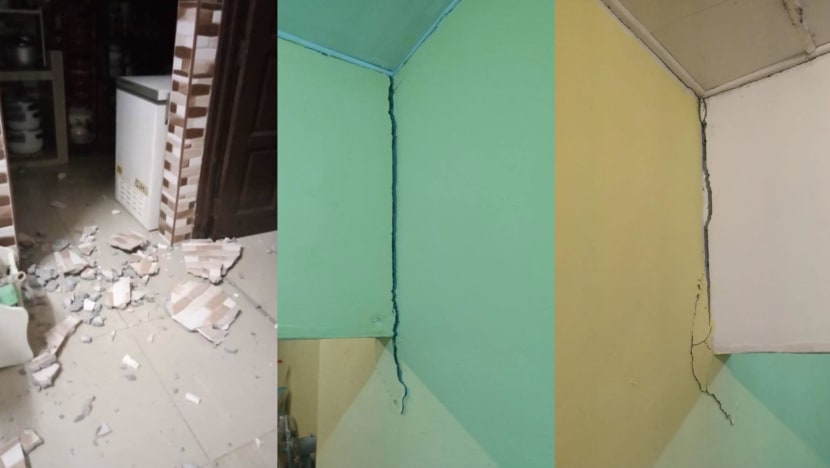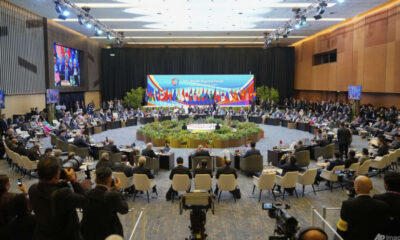World
Mild Earthquakes Hit Johor, Highlighting Seismic Risks in Region

Two mild earthquakes struck northern Johor over the weekend, reminding residents of Malaysia and Singapore that they are not immune to seismic activity. The tremors, which occurred on August 24, 2023, registered magnitudes of 4.1 and 2.8 and were felt across several Malaysian states, including Negeri Sembilan, Melaka, and Pahang. Although there were no reports of injuries or fatalities, the incidents have raised concerns about the region’s seismic vulnerabilities.
The first quake occurred at about 06:15, located 5 kilometers west of Segamat at a depth of 10 kilometers. A second tremor followed at 09:00, approximately 28 kilometers northwest of Kluang. According to the Malaysian Meteorological Department (MetMalaysia), both earthquakes had epicenters near the Mersing Fault Zone, a significant fault line in Peninsular Malaysia.
Seismic Activity and Historical Context
Geological experts have pointed to the historical precedent of seismic events in the region. Notably, two earthquakes measuring over 5 on the Richter scale occurred in Johor in 1922, which were widely felt across the area. Additionally, a tremor in 1948 near southern Singapore caused property damage, illustrating that such events are not entirely rare.
Aron Meltzner, an earthquake geology expert from the Nanyang Technological University (NTU) Earth Observatory of Singapore, emphasized the significance of these recent earthquakes. “This earthquake is a reminder that the Johor region has experienced larger earthquakes in the past,” he stated. Meltzner highlighted that while earthquakes in this area are infrequent, the geological faults remain active.
Assessing Risks and Future Preparedness
According to MetMalaysia’s director-general, Mohd Hisham Mohd Anip, the likelihood of significant earthquakes occurring in the region remains low, with most recorded earthquakes being minor. He noted that the Mersing Fault Zone is less active compared to fault lines in Sabah. “Based on existing records, earthquake magnitudes typically do not exceed 5,” he explained.
Yet, geologists warn that the recent tremors indicate that the faults are still capable of producing larger earthquakes. Experts like Azlan Adnan from the Academy of Sciences Malaysia have called for increased monitoring and research on seismic activities in the region. “The current situation in the Mersing-Segamat corridor is serious,” he stated, recommending the installation of more seismometers and a strong-motion accelerograph network.
The Mersing Fault Zone extends at least 20 kilometers, and if it were to experience a full rupture, it could produce an earthquake with a magnitude of up to 6.5. Wei Shengji, a geologist at NTU, echoed this sentiment, noting that larger earthquakes have occurred in the past and could happen again.
Environmental factors may also influence seismic activity. Renard Siew, a climate change adviser, pointed out that climate change could indirectly affect earthquake frequency. “Higher rainfall linked to climate change may interact with the soil and ground, triggering seismic activities,” he said.
As the region considers its preparedness for potential seismic events, experts stress the importance of effective communication and public awareness. “A reliable warning system tailored to the region’s needs could take years to develop,” Meltzner cautioned, referencing California’s lengthy process in establishing its own system.
In light of the recent earthquakes, there are growing concerns regarding the impact on transportation infrastructure, particularly as Malaysia enhances its railway systems. Azlan highlighted the need for inspections of public transport systems, such as the Electric Train Service, after seismic events. He urged operators to have clear post-event standard operating procedures to ensure safety and operational integrity.
As authorities assess the implications of these tremors, the focus remains on enhancing monitoring and preparedness to safeguard the public from potential future seismic risks.
-

 Lifestyle3 months ago
Lifestyle3 months agoHumanism Camp Engages 250 Youths in Summer Fest 2025
-

 Sports3 months ago
Sports3 months agoDe Minaur Triumphs at Washington Open After Thrilling Comeback
-

 Business4 months ago
Business4 months agoKenvue Dismisses CEO Thibaut Mongon as Strategic Review Advances
-

 Sports4 months ago
Sports4 months agoTupou and Daugunu Join First Nations Squad for Lions Clash
-

 Top Stories4 months ago
Top Stories4 months agoColombian Senator Miguel Uribe Shows Signs of Recovery After Attack
-

 World4 months ago
World4 months agoASEAN Gears Up for Historic Joint Meeting of Foreign and Economic Ministers
-

 Business4 months ago
Business4 months agoOil Prices Surge Following New EU Sanctions on Russia
-

 Health3 months ago
Health3 months agoNew Study Challenges Assumptions About Aging and Inflammation
-

 Entertainment3 months ago
Entertainment3 months agoDetaşe-Sabah Violin Ensemble Captivates at Gabala Music Festival
-

 Entertainment3 months ago
Entertainment3 months agoBaku Metro Extends Hours for Justin Timberlake Concert
-

 Business4 months ago
Business4 months agoU.S. House Approves Stablecoin Bill, Sends to Trump for Signature
-

 Top Stories4 months ago
Top Stories4 months agoRethinking Singapore’s F&B Regulations Amid Business Closures









